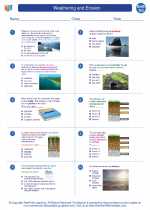Geothermal Energy
Geothermal energy is the heat that comes from the sub-surface of the earth. It is contained in the rocks and fluids beneath the earth's crust and can be found as far down to the earth's hot molten rock, magma. It can be found in the form of steam, hot water, and hot rocks.
How is geothermal energy used?
Geothermal energy is used to generate electricity and to heat and cool buildings. The heat from the Earth can be used as an energy source in many ways, from large and complex power stations to small and relatively simple pumping systems.
Electricity Generation
Geothermal power plants use steam produced from reservoirs of hot water found a few miles or more below the Earth's surface to produce electricity. There are three types of geothermal power plants: dry steam, flash steam, and binary cycle.
Dry Steam Power Plants
Dry steam power plants draw from underground resources of steam. The steam is piped directly from the geothermal reservoir to a turbine, which drives a generator to produce electricity.
Flash Steam Power Plants
Flash steam power plants are the most common type of geothermal power generation plants. They use water at temperatures greater than 182°C (360°F) that is brought to the surface under its own pressure. As the hot water rises to the surface, the pressure decreases and some of the hot water boils to steam.
Binary Cycle Power Plants
Binary cycle power plants operate on water at lower temperatures of about 107°C - 182°C (225°F - 360°F). These power plants use the heat from the hot water to boil a working fluid, usually an organic compound with a low boiling point. The working fluid is vaporized in a heat exchanger and used to turn a turbine.
Heating and Cooling
Geothermal energy can also be used for heating and cooling buildings through geothermal heat pumps. This technology relies on the fact that the Earth remains at a relatively constant temperature just a few feet below the surface, so it can be used to heat or cool a building.
Study Guide: Geothermal Energy
- What is geothermal energy? How is it formed?
- What are the different ways in which geothermal energy is used?
- Explain the process of electricity generation in geothermal power plants.
- Describe the three types of geothermal power plants and how they operate.
- How is geothermal energy utilized for heating and cooling buildings?
◂Earth Science Worksheets and Study Guides High School. Weathering and Erosion

 Worksheet/Answer key
Worksheet/Answer key
 Worksheet/Answer key
Worksheet/Answer key
 Vocabulary/Answer key
Vocabulary/Answer key
 Vocabulary/Answer key
Vocabulary/Answer key
 Vocabulary/Answer key
Vocabulary/Answer key
